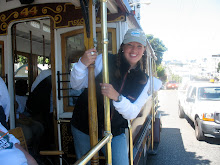 Geocaching is my new favorite sport. Armed with my Garmin GPS and the proper coordinates, I can find any of the 700,000 caches around the world. While caching through the North Hills with my dad and brother this weekend, I couldn't help but think of the many ways to incorporate these tools into the classroom.
Geocaching is my new favorite sport. Armed with my Garmin GPS and the proper coordinates, I can find any of the 700,000 caches around the world. While caching through the North Hills with my dad and brother this weekend, I couldn't help but think of the many ways to incorporate these tools into the classroom.According to Wikipedia, Geocaching is an outdoor treasure-hunting game in which the participants use a Global Positioning System (GPS) receiver or other navigational techniques to hide and seek containers (called "geocaches" or "caches") anywhere in the world. A typical cache is a small waterproof container containing a logbook and "treasure," usually toys or trinkets of little value. Geocaches are currently placed in 222 countries around the world and on all seven continents, including Antarctica.
Wouldn't it be cool to set up a scavenger for students who have to figure out math problems to find the coordinates? Students would then need to know how to read latitude and longitude to find the cache. Each cache could contain a comprehension question, a discussion question, a letter of a spelling word, part of a test, a vocabulary word, or a small part of a whole project.
Not only is this sport addictive to adults, it is catching on with students, too. Twin third graders were so excited to bring a Travel Bug to school because they needed to have their pictures taken with it at a library. It's so rewarding to hunt, bushwack, hike, swat bugs, etc. and then find the cache.
A photo of Justin and Dad at a cache in North Park:







No comments:
Post a Comment